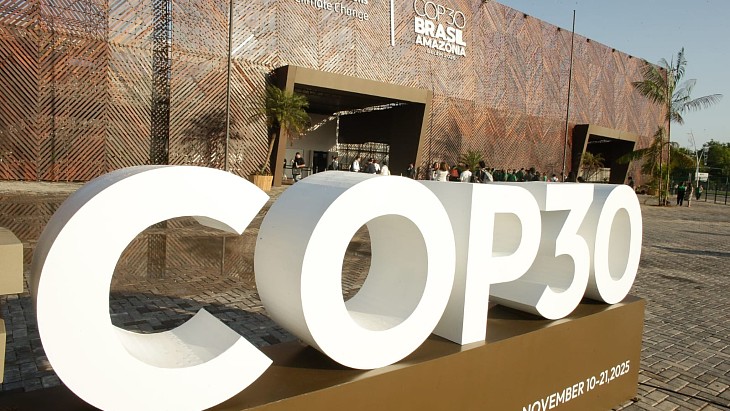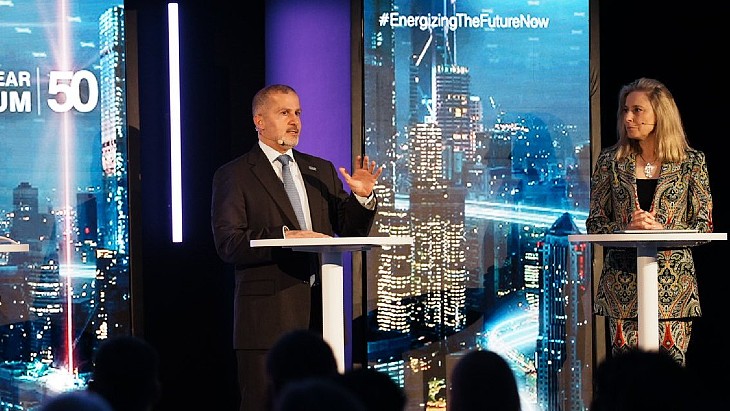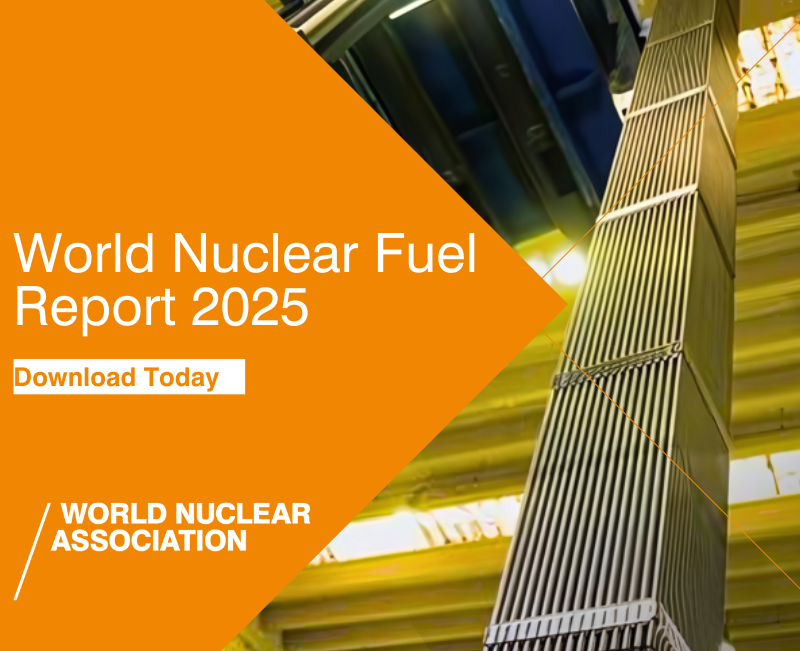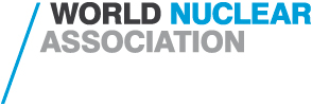There is a new cooperation agreement to enhance fusion research between the International Atomic Energy Agency (IAEA) and the International Thermonuclear Experimental Reactor (Iter) Organization. Meanwhile, a first procurement arrangement for major components of the Iter fusion reactor has been signed.
The IAEA-Iter cooperation agreement is aimed at strengthening the working relationship between the two organizations – the IAEA is a UN agency for promoting safe, secure and peaceful nuclear technologies, while Iter is a joint international research and development project that aims to demonstrate the scientific and technical feasibility of nuclear power through fusion. The Iter Organization is working to build the world's biggest tokamak, named Iter, at Cadarache in the South of France. It is a partnership of the European Union (represented by Euratom), Japan, China, Korea, Russia and the USA.
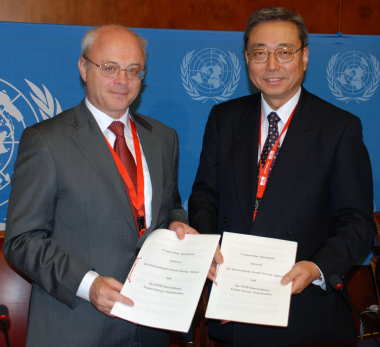 |
| Yury Sokolov and Kaname Ikeda signed the cooperation agreement (Image: Iter) |
The agreement was signed by IAEA deputy director general Yury Sokolov and Iter director general Kaname Ikeda at the opening of the 22nd IAEA Fusion Energy Conference, taking place in Geneva, Switzerland. The IAEA has been closely involved in the development of the Iter project since its inception. "We are proud of the IAEA's role in Iter's development," said Sokolov, describing how the IAEA has in the past helped the international fusion community to focus its plasma physics research on the Iter design, encouraging greater global investment in fusion.
Under the new agreement, both organizations will exchange information on the study and potential application of fusion energy and will take part in each other's meetings including Iter council meetings and IAEA annual conferences as well as scientific and technical committees. They will also cooperate on training, publications, organization of scientific conferences, plasma physics and modelling, and fusion safety and security. The agreement is also expected to broaden the reach of fusion research into still more countries which do not currently have fusion programs.
Conductor procurement
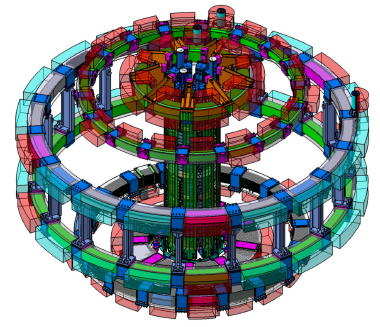 |
| High tech: Iter's poloidal coil system (Image: Iter) |
The manufacturing of the PF coils is being divided between China, Russia and Europe, with China contributing 67%, some 45.4 km of cable. Russia will produce 19.7% (10.7 km) with Europe providing the remaining 13.3% (8.6 km). The PF coils are one of four main subsystems making up Iter's superconducting magnet system. The PF coil system itself consists of six independent coils, made of two types of twisted, multifilament nickel-plated niobium-titanium based composite strands. A prototype coil for the PF system performed to design specification in recent tests hailed as a technological milestone for the project.
The procurement agreement was signed after the inauguration of China's domestic agency, formally named the China International Nuclear Fusion Energy Program Execution Center, at a ceremony attended by over 100 representatives including high-ranking officials, ministers, academics, diplomats and industrial representatives. Ikeda was there, and unveiled one of two commemorative plaques acknowledged the importance of China to the program. "Iter needs the outstanding knowledge and ability of the Chinese fusion scientists. Iter needs the wider contribution of China's outstanding scientific community and of course the support of the vast high-technology industry base that flourishes in your country," he said.




_18570.jpg)
_18938.jpg)
_33584.jpg)
_82983.jpg)
